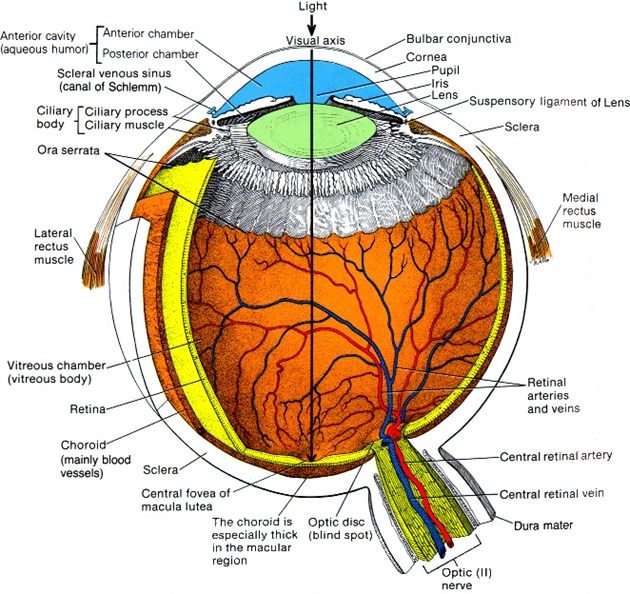
The eye is an organ which collects light and turns it into electronic messages which are sent to the brain. The brain then turns those signals into a picture for you to see. Since we have two eyes, two pictures are usually created. These two offset pictures allow us to have depth of vision (primarily at near). However, most of our depth of vision comes from judging the relative size of the objects we see. Therefore, if we lose the vision in one eye (e.g., from an eye cancer), we can continue to do most everything we could do before.
The eye has components. The eyelids hold our lashes, keep the eye moist, and shield it from intense light. The conjunctiva is a membrane that covers most of the eyeball and allows the lids to gently glide over the eye. The clear cornea covers the iris, and works like a watch-face for the eye. It allows a small amount of light to enter the eye through the pupil. Then along with the natural lens, it acts like a camera-lens and focuses the image onto the retina. The retina is like the film in your “ocular” camera. It lines the inside of the eye, and is mostly clear. The retina has very few blood vessels which would disturb the retinal picture. Since the retina has so few blood vessels and does a lot of work, it needs to be nourished by a blood vessel layer beneath it, called the choroid or uvea.
Not only does the choroid feed the retina, but it also contains pigment cells called melanocytes. These cells and their product “melanin” absorbs any extra light which might distort the retinal picture. Melanocytes are the cells which can lose control, and grow into a malignant melanoma.









